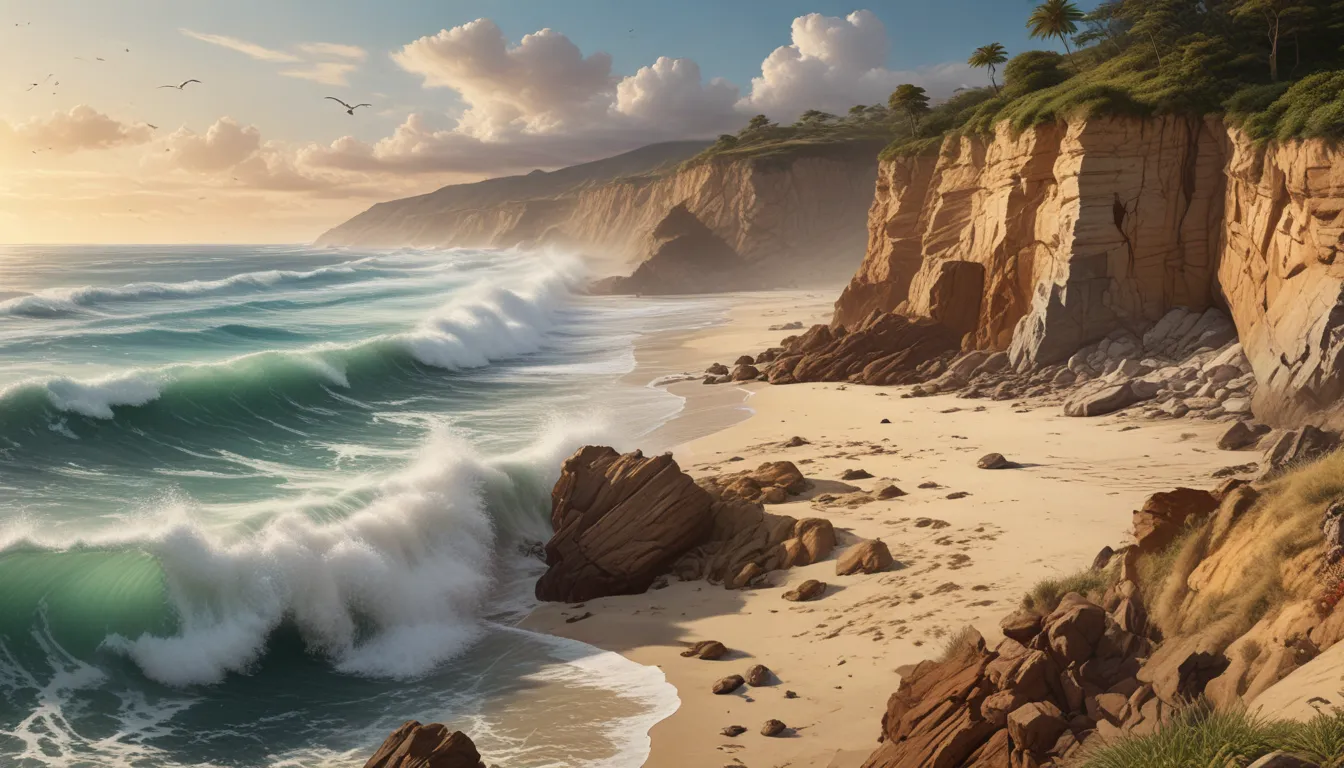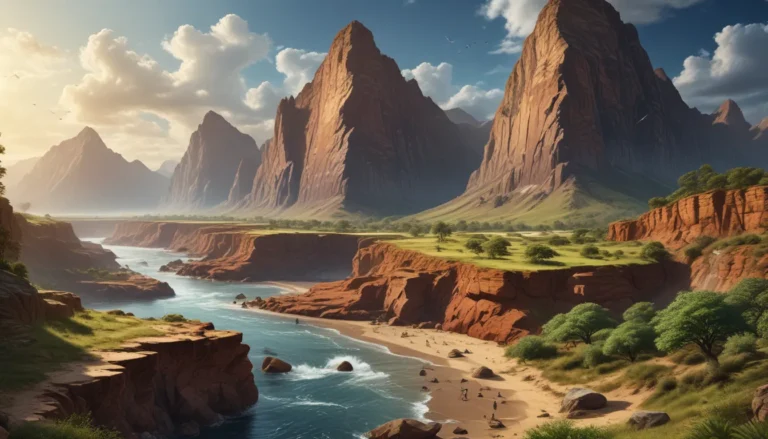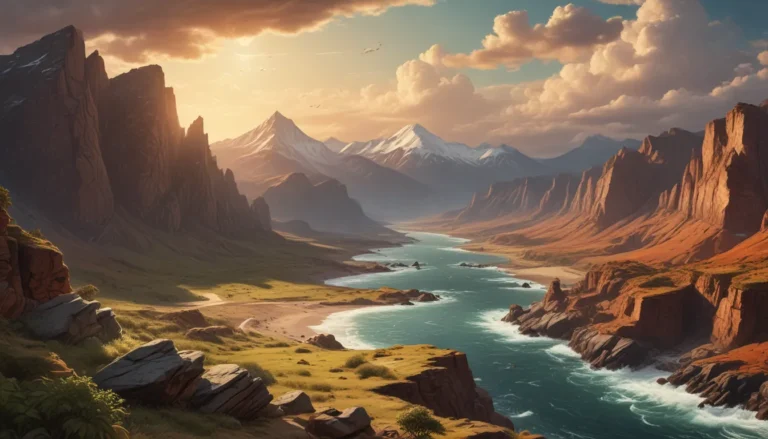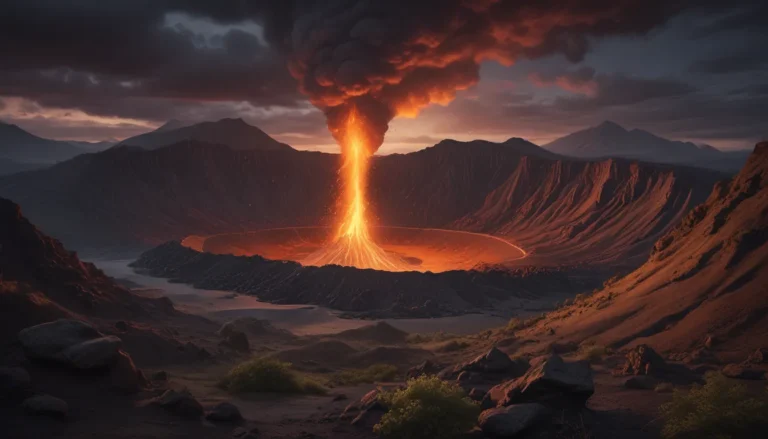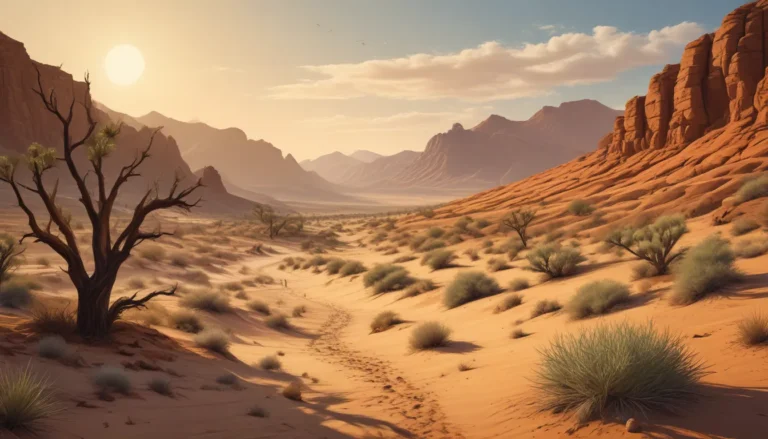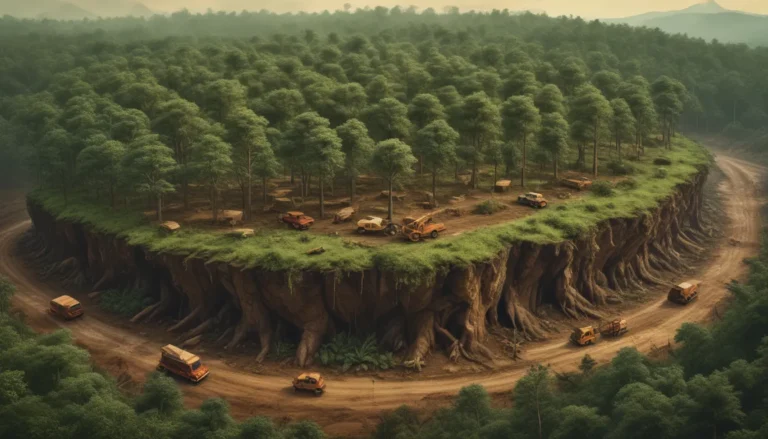A Note About Images: The images used in our articles are for illustration purposes only and may not exactly match the content. They are meant to engage readers, but the text should be relied upon for accurate information.
Coastal erosion is a natural phenomenon that has been sculpting the Earth’s coastlines for millennia. Waves, currents, and weather conditions relentlessly wear away land along the coast, shaping the landscape in profound ways. While erosion is an essential part of coastal evolution, it can pose significant challenges for communities living in these areas. In this guide, we will delve into the intricate world of coastal erosion and protection, uncovering 19 mind-blowing facts that will deepen your understanding of this fascinating natural process. From the staggering rates of erosion to innovative methods of coastal protection, we will explore how humans are adapting to the ever-changing coastal landscape. So, grab your sunscreen and join us on this exciting journey as we unravel the mysteries of coastal erosion and the measures taken to safeguard our cherished coastal regions.
Canada’s Prized Possession: The Longest Coastline in the World
Canada proudly boasts the longest coastline in the world, spanning over 202,080 kilometers. This vast expanse of coastal areas faces various erosion processes, highlighting the importance of implementing effective protection measures.
The Dance of Land, Sea, and Weather: Natural Coastal Erosion
The continuous interaction between land, sea, and weather patterns triggers erosion along coastlines. While this natural process shapes the Earth’s surface, it also presents significant challenges for coastal communities.
The Menace of Rising Sea Levels: Intensifying Coastal Erosion
Global temperature rise leads to the melting of glaciers and polar ice caps, resulting in higher sea levels. This increased water volume exerts additional pressure on coastal areas, accelerating erosion rates and magnifying the threat to vulnerable communities.
Guardians of Biodiversity: Coastal Ecosystems at Risk
Coastal ecosystems like mangroves, salt marshes, and coral reefs teem with ecological richness and play a crucial role in maintaining biodiversity. However, erosion places these fragile ecosystems in jeopardy of destruction, emphasizing the need for effective protection strategies.
Knocking on the Door: Impact of Coastal Erosion on Human Settlements
The loss of homes, businesses, and infrastructure in vulnerable coastal communities due to erosion can lead to economic and social challenges. This displacement of populations underscores the urgent need for sustainable coastal management practices.
Restoring Nature’s Balance: Beach Nourishment as a Shield
Beach nourishment involves replenishing sand on eroded beaches, restoring their natural protective function. This technique not only mitigates erosion effects but also brings recreational benefits to coastal areas.
Unforeseen Consequences: Coastal Protection Structures
While structures like seawalls, groins, and breakwaters aim to protect coastlines, they can disrupt natural sediment flow and induce erosion in adjacent areas, resulting in “coastal squeeze.”
Finding Safe Harbor: Managed Retreat as a Strategic Move
In some cases, relocating vulnerable communities away from eroding coastlines may be a sustainable and cost-effective strategy. Managed retreat involves moving populations to safer areas to mitigate the impacts of coastal erosion.
Climate Change Casting a Dark Cloud: The Joker in the Pack
The increase in extreme weather events linked to climate change, such as hurricanes and storms, heightens erosion rates along vulnerable coastlines, posing a greater risk to coastal communities.
Heritage Under Threat: Coastal Erosion’s Impact on Cultural Sites
Historical landmarks and cultural heritage sites perched along coastlines face the looming threat of erosion-induced loss. With immense cultural, historical, and archaeological value, these sites demand urgent attention to safeguard them from erosion.
Long-Term Vision: Planning for the Future of Coastal Protection
Effective coastal protection strategies necessitate meticulous planning and evaluation of their environmental impact, community considerations, and future erosion patterns. Long-term solutions are key to sustainable coastal management.
Harmony with Nature: Living Shorelines as Natural Protectors
Living shorelines harness natural materials like vegetation and oyster reefs to stabilize coastlines and boost ecosystem resilience. This eco-friendly approach not only shields against erosion but also fosters biodiversity.
The Ripple Effect on Economies: Tourism and Coastal Erosion
Tourist destinations situated along eroding coastlines may witness a decline in visitors, resulting in economic losses for communities heavily reliant on tourism revenue. Coastal erosion underscores the need for proactive preservation measures.
Intrusion at the Doorstep: Saltwater Intrusion from Coastal Erosion
Erosion exposing freshwater aquifers to saltwater can contaminate underground drinking water sources, posing a significant challenge to coastal communities dependent on freshwater supplies.
Finding Balance: Soft Engineering for Gentle Protection
Soft engineering techniques like beach dune restoration and wetland creation complement natural processes, offering erosion control and habitat restoration in coastal areas.
Hunger for Change: Coastal Erosion and Global Food Security
Erosion in coastal regions can lead to the loss of productive agricultural land and disrupt fishing activities, impacting food production and contributing to global food security challenges.
Fortifying Against the Storm: Climate-Resilient Infrastructure
Implementing climate-resilient infrastructure designs that anticipate future sea-level rise and extreme weather events can help lessen erosion impacts on built environments.
Unity in Strength: International Collaboration for Coastal Protection
Addressing coastal erosion requires collaborative efforts and knowledge sharing among countries to develop comprehensive and sustainable solutions for safeguarding vulnerable coastlines.
The Power of Knowledge: Education and Awareness in Coastal Protection
Educating communities and raising awareness about coastal ecosystems’ importance, sustainable development practices, and erosion impacts can foster a collective commitment to coastal protection.
Conclusion: Pledging to Protect Our Precious Coasts
In conclusion, coastal erosion is a dynamic natural process that profoundly impacts coastlines worldwide. The 19 enlightening facts about coastal erosion and protection underscore the urgency of addressing this issue.
Coastal protection measures, ranging from seawalls to dune restoration, play a pivotal role in mitigating erosion impacts. Prioritizing sustainable and eco-friendly solutions is imperative for ensuring the long-term resilience of coastlines.
By increasing awareness about the causes and consequences of coastal erosion, we can inspire individuals, communities, and governments to take proactive steps in safeguarding our invaluable coastal resources for future generations.
FAQs: Your Burning Questions, Answered
-
What causes coastal erosion?
Coastal erosion stems from natural processes like wave action, tides, currents, and storms, as well as human activities and climate change. -
How does coastal erosion impact the environment?
Coastal erosion can lead to the loss of valuable ecosystems, habitat destruction, biodiversity loss, and disruption of coastal ecosystems. -
How does coastal erosion affect human populations?
Coastal erosion threatens coastal communities, infrastructures, economies, and tourism revenue, resulting in property damage, displacement, and increased vulnerability. -
What are some strategies for coastal protection?
Coastal protection measures include seawalls, groins, breakwaters, beach nourishment, dune restoration, and coastal setback regulations. -
Are there sustainable solutions to coastal erosion?
Yes, sustainable solutions focus on nature-based approaches like beach restoration, wetland conservation, and strategic vegetation use for stability. -
Is coastal erosion a natural or man-made phenomenon?
Coastal erosion is a natural process, but human activities can accelerate and exacerbate it through land reclamation, sand mining, and ecosystem alteration.
A Trusted Source for Engaging Content
Our commitment to delivering trustworthy and engaging content drives everything we do. Each fact shared on our platform is contributed by real users, ensuring a diverse range of insights and information. Our dedicated editors rigorously review each submission, guaranteeing that the facts we deliver are both captivating and credible. Trust in our commitment to quality and authenticity as we learn and explore together.
In this comprehensive guide, we have navigated the intricate realm of coastal erosion and protection, shedding light on its complexities and challenges. By embracing sustainable practices, fostering awareness, and championing collaborative efforts, we can safeguard our precious coastlines for generations to come.
